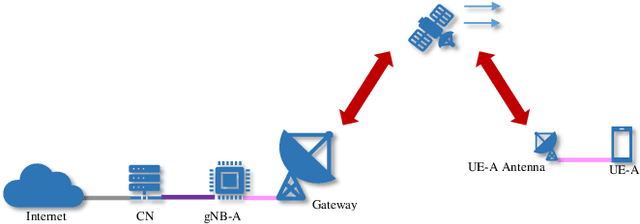Ana I. Pérez-Neira
From 5G to 6G: Revolutionizing Satellite Networks through TRANTOR Foundation
Nov 02, 2023



Abstract:5G technology will drastically change the way satellite internet providers deliver services by offering higher data speeds, massive network capacity, reduced latency, improved reliability and increased availability. A standardised 5G ecosystem will enable adapting 5G to satellite needs. The EU-funded TRANTOR project will seek to develop novel and secure satellite network management solutions that allow scaling up heterogeneous satellite traffic demands and capacities in a cost-effective and highly dynamic way. Researchers also target the development of flexible 6G non-terrestrial access architectures. The focus will be on the design of a multi-orbit and multi-band antenna for satellite user equipment (UE), as well as the development of gNodeB (gNB) and UE 5G non-terrestrial network equipment to support multi-connectivity.
Adaptive function approximation based on the Discrete Cosine Transform (DCT)
Sep 01, 2023



Abstract:This paper studies the cosine as basis function for the approximation of univariate and continuous functions without memory. This work studies a supervised learning to obtain the approximation coefficients, instead of using the Discrete Cosine Transform (DCT). Due to the finite dynamics and orthogonality of the cosine basis functions, simple gradient algorithms, such as the Normalized Least Mean Squares (NLMS), can benefit from it and present a controlled and predictable convergence time and error misadjustment. Due to its simplicity, the proposed technique ranks as the best in terms of learning quality versus complexity, and it is presented as an attractive technique to be used in more complex supervised learning systems. Simulations illustrate the performance of the approach. This paper celebrates the 50th anniversary of the publication of the DCT by Nasir Ahmed in 1973.
Polarization-Based Security: Safeguarding Wireless Communications at the Physical Layer
Jul 14, 2023Abstract:Physical layer security is a field of study that continues to gain importance over time. It encompasses a range of algorithms applicable to various aspects of communication systems. While research in the physical layer has predominantly focused on secrecy capacity, which involves logical and digital manipulations to achieve secure communication, there is limited exploration of directly manipulating electromagnetic fields to enhance security against eavesdroppers. In this paper, we propose a novel system that utilizes the Mueller calculation to establish a theoretical framework for manipulating electromagnetic fields in the context of physical layer security. We develop fundamental expressions and introduce new metrics to analyze the system's performance analytically. Additionally, we present three techniques that leverage polarization to enhance physical layer security.
On the Use of AI for Satellite Communications
Jul 15, 2020Abstract:This document presents an initial approach to the investigation and development of artificial intelligence (AI) mechanisms in satellite communication (SatCom) systems. We first introduce the nowadays SatCom operations which are strongly dependent on the human intervention. Along with those use cases, we present an initial way of automatizing some of those tasks and we show the key AI tools capable of dealing with those challenges. Finally, the long term AI developments in the SatCom sector is discussed.
 Add to Chrome
Add to Chrome Add to Firefox
Add to Firefox Add to Edge
Add to Edge